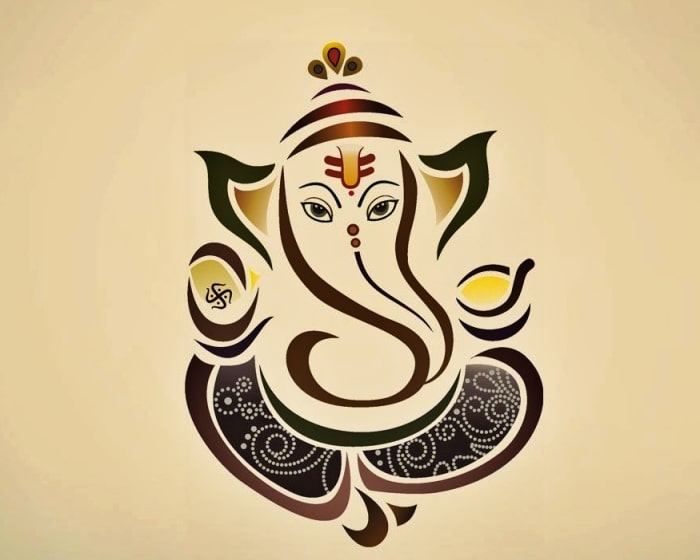Why We Worship GANAPATI.
Ganapati, one of the important Vedic deity, worshipped across India and the world may have some special significance that in all our celebrations, we generally miss to explore. I always wonder, after seeing the rich and diverse culture of India, that it's roots may lay somewhere deeper within it's ancient literature, that is often ignored in today's time. Blindly believing in some religious text is the last thing that we should do today. But ignoring some of the oldest ideas ever known to us, maybe from the time when the concept of religion was unheard, may not be the best thing to do. The only way I am going to use the Vedic texts is to get the description of the ideas that we wish to understand. Every kind of idea naturally exists in the world, even before it is ever formulated. Be it the idea of a simple square or the GDP per capita of a nation, they are pure abstracts that always existed. So the Vedic Description should not be seen as some kind of prophesy, but rather the formulation of some of the already existing abstracts. All I am doing here is making an attempt to write all that I understand about the ideas behind Ganapati.
 |
| LORD GANPATI |
Looking superficially, we may find Ganapati as one of the many gods worshipped in Hinduism. But the idea of god itself is somewhat new to India, even though it is widely accepted in current times among the masses. The concept of Devas widely used in Vedas , is often interchanged with god, which may not be completely correct. Instead of worshipping individual people, Vedas generally worship ideas and characteristics in personified form. Leaving further comparison for some other day, let us just focus on understanding the idea behind Devas, as it may help us to understand more about Ganapati today. The simplest explanation of a Deva can be 'the one who gives'(जो देता है वो देव). Anything that gives or does something positive is considered a Deva. That's the reason Sun, Earth, river, parents, teacher and nature are considered Devas in various Vedic texts. Even though most of us are said to have the the qualities of both Devas and Asuras, the term Deva and Asura are pure abstracts.
In Ganesh Atharvashirsha, Ganapati is considered to be Aatma(त्वं साक्षादात्माऽसि नित्यम्). The idea of Aatma seems to be the favorite of Vedic literature. The word Aatma loosely translates to 'inside me', and is not to be confused with 'soul'. The concept of Aatma is entirely variable and philosophers often describe it according to their experience of the inner self. The intention to look within to resolve something rather than, looking above the clouds is something rather admirable. Seeing more about Aatma some other day, let us just focus on the fact that the philosophers considered Ganapati to be something that existed within them.
Now let us try to see what Ganapati signifies. The term 'Ganapati' is the combination of 'gana' and 'pati'. Which means Ganapati is someone who governs a gana. Gana usually means collection of several objects. To get further context of the word gana let us see some description of the idea of Ganapati as given in the Atharvashirsha. Lines like त्वमेव प्रत्यक्षं तत्त्वमसि।( You are the essence underlying everything) and त्वं भूमिरापोऽनलोऽनिलो नभः ।त्वं चत्वारि वाक् पदानि ।(You are manifested as earth, water, fire, wind, sky), gives the idea that Ganapati is something that is omnipresent everywhere in the universe. So we may interpret gana as everything present in the universe. The lines त्वमेव केवलं कर्ताऽसि ।त्वमेव केवलं धर्ताऽसि ।त्वमेव केवलं हर्ताऽसि ।(You are the only doer, sustainer and destroyer) indicates that Ganapati is the one that governs the actions of various ganas.
Maybe the existence of universe is a fallacy without some laws governing it. We could try imagining a world where gravitational force is different between objects at same positions at different instances of time. Maybe the force is absolutely random. Such universe could theoretically exist. But still those are the laws of randomness, that the universe abides. Having a universe without any laws feels like a circular square. Looking through the description of Ganapati, the only conclusion I could make is, him being the laws present everywhere in the universe that makes it's existence possible. Or we may even define universe as the collection of objects that abide certain laws. Nowhere I mean to say, some God wrote theses laws. But Ganapati is the idea that represents them.
It is Shakti, that gives birth to Ganapati, with the responsibility to guide the inner Gana towards the persuasion of Shiva. Ganapati initially lacks humility, something that is rather required to understand Shiva. Shiva being the most merciful removes the ignorance of Ganapati giving him the humility to pursue Shiva. The elephant head of Ganapati represents the broader perspective and calmness one gets after achieving humility.
 |
| SHIVSHAKTI |
Apart from this, all of us have known the social impact of Ganapati, from the time when Bal Gangadhar Tilak used Ganesh Utsav to unite Hindustan towards the persuasion of it's independence. This is all I could interpret about the idea of Ganapati, given the limited amount of reading and understanding I have had of the Vedic literature. May we worship Ganapati to be grateful of the world we live in and pursue knowledge that is far beyond the animal nature of humans.
- SAMIR KAREMORE
ASSISTANT WEB DEVELOPER
WCE ELESA


Great blog Samir
ReplyDeleteA really good one Samir. Great use of Atharvashirsha 💯 And Ganapati also rules the first of 7 chakras in human body - Muladhar chakra.
ReplyDelete